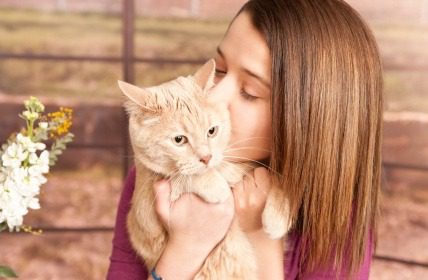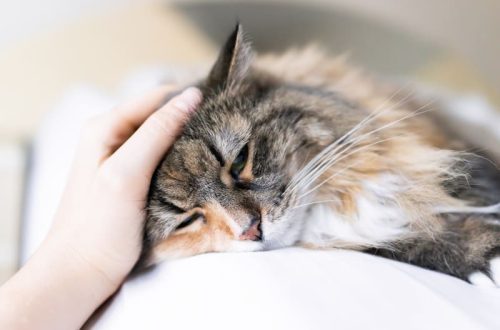
Distemper in cats
This disease does not just scare cat owners – it often leads to death. We will tell you how to prevent illness and save your pet.
Causes and ways of infection
First of all, you need to understand that distemper is not a plague and it is not transmitted to humans. Distemper, or panleukopenia, is caused by viruses of the Parvoviridae family, while black death is caused by Yersinia pestis bacteria. This disease should not be confused with canine distemper, which puppies are susceptible to.
The causative agents of distemper are very resistant to the external environment: they are not afraid of either cold or heat, or even powerful disinfection with alcohol or chloroform. This makes it difficult to prevent and treat a disease that is transmitted in many ways:
- Through contact with a sick animal
If a healthy cat is in the same room as an infected one, the virus will almost certainly enter her body by airborne droplets. That is why the infection of one animal can lead to the death of almost all the inhabitants of the cattery.
- Through contact with contaminated objects
Parvoviruses live on various surfaces for up to 12 months, so any contact with used toys, leashes and bowls is a potential threat. The person himself can bring the virus into the house, for example, on clothes or shoes.
- Through insect bites
Carriers of viruses can be blood-sucking insects: ticks, fleas, bedbugs and mosquitoes.
- in utero
Alas, the kittens of a sick cat are almost certainly doomed. As a rule, they die before birth or a couple of days after it. It is necessary to take care of the health of the cat itself – it will have to be saved not only from distemper, but also from the consequences of a missed pregnancy or miscarriage.
Risk group
It includes all unvaccinated pets, but some of them also have weak immunity:
- Kittens under the age of 1 year.
- Elderly animals.
- pregnant cats.
- Cats with chronic diseases and allergies.
- Representatives of breeding breeds: Maine Coons, Siamese, British and Persian cats.
Symptoms
The incubation period for distemper in a cat ranges from 2 to 14 days, and the symptoms depend on the form of the disease. In small kittens, it is most often lightning fast – kittens refuse to eat, hide from the light and die in 2-3 days from dehydration and fever.
In the acute form of panleukopenia, the virus attacks the heart, lungs and gastrointestinal tract, the following symptoms are observed:
- vomiting, often containing blood or mucus;
- diarrhea or constipation;
- refusal of water and food;
- high temperature (up to 41 °);
- shortness of breath, hoarse breathing, cough;
- disheveled wool;
- apathy and loss of coordination.
In adult vaccinated animals, a subacute form of distemper occurs, in which the same symptoms are not so pronounced. An animal with a strong immune system can cope with the disease without medical intervention, but first the diagnosis must be confirmed by a specialist.
Diagnosis and treatment
The advice “take a cat and go to the vet” is appropriate for any manifestations of various diseases, but with panleukopenia, the bill goes not for days, but for hours. Before visiting the clinic, warn about the suspicion of cat distemper, so as not to infect other furry patients.
After examining the animal, the doctor may order blood, feces, nasal secretions, and oral mucus tests. If they confirm a sharp decrease in leukocytes in the blood, and a virological test determines the pathogen, distemper is diagnosed. In cats, the treatment of this disease can consist of a dozen procedures in the following areas:
- Destroy the virus
This can only be done by powerful antiviral drugs, which in no case can be prescribed independently. If you want to cure your pet, give him only the medicines prescribed by the doctor.
- Eliminate intoxication
With distemper, the cat’s body does not have time to cope with toxins – especially if the animal refuses water. To correct the situation, the doctor may prescribe a chloride solution intravenously, diuretics and glucose droppers.
- Prevent secondary infection
Neutropenia (a decrease in the number of white blood cells called neutrophils) caused by distemper can lead to sepsis. In addition, the disease can destroy the cat’s intestinal barrier – and then unwanted bacteria enter the bloodstream. To prevent this, your veterinarian will prescribe broad-spectrum antibiotics.
- Boost Immunity
This recommendation goes far beyond the course of treatment – a cat always needs good nutrition, hygiene and preventive examinations with a doctor. But during the recovery period, you will have to act more decisively: take immunomodulatory and heart-stimulating drugs.
The course of treatment is 1-2 weeks, and all this time you need to take maximum care of the pet: protect it from bright light, drafts and stress. And after defeating the disease, you will have to postpone meetings with furry comrades – distemper in cats is transmitted to other animals within a few months after recovery.
Prevention
The only proven preventive measure against feline distemper is regular vaccination.
The first vaccination is done already at the age of 1.5-2 months. The vaccination schedule and necessary preventive measures should be consulted with your veterinarian before vaccination.





